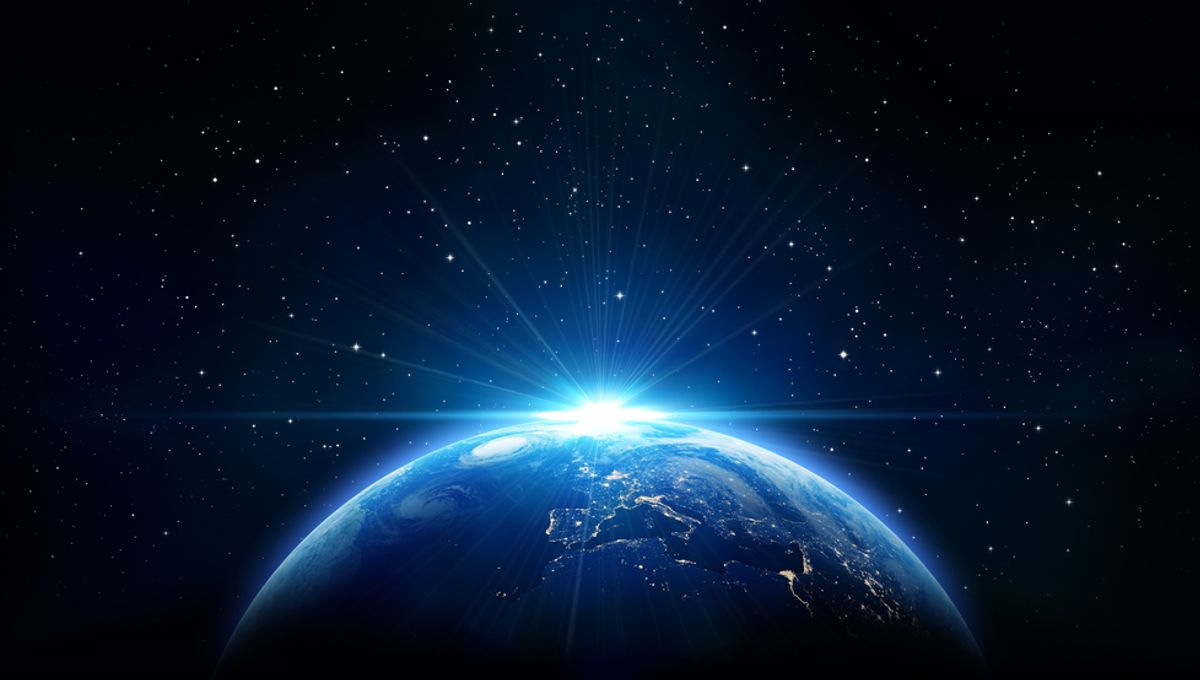
JWST can detect many interesting gases in the atmospheres of exoplanets. As those distant worlds pass in front of their stars, their atmospheres filter light, leaving an impression of its components that the telescope can detect. If an alien civilization has its own JWST, it would be able to do the same with Earth, and new research suggests they would be able to tell that an intelligent civilization lives here.
Most of Earth’s atmosphere is nitrogen with a good chunk of oxygen. All the rest of the gases are a small fraction of the total. But as we know from the ongoing climate crisis, they can have a big effect – an effect that can be seen from far away should anyone be looking.
A team of astronomers set out to calculate what our planet’s atmosphere would look like as seen by an infrared telescope waiting to study it from the light of our Sun. In one version, where the signal of the molecules is much clearer than the noise of the instrument, the presence of a vast array of molecules was detected, including carbon dioxide, methane, ozone, water vapor, and even chlorofluorocarbons (CFCs), which have been banned for over 33 years but are still around in Earth’s atmosphere.
In this scenario, were we – or “aliens” – to see Earth from a distant world, the evidence for habitability would be very compelling, indicating both a biosphere and a “technosphere” as the presence of CFCs would indicate an artificial source since they are not produced by any known natural process.
In a more realistic expectation with what JWST might see, among a noisier signal, the team was still able to identify carbon dioxide, methane, and (a hint of) ozone. Now, without contextual information about the planet, these gases alone don’t spell out there is life, and even an intelligent civilization, here but they would certainly raise some eyebrows on the possibility.
Using Earth as a model, the team believes they can better understand the complexities of the exoplanetary atmosphere in worlds that are roughly like our own. An intriguing test is the TRAPPIST-1 planets: seven exoworlds the size of Earth orbiting a red dwarf about 40 light-years away.
Some of them are in the habitable zone of their system. The closest ones have been already observed by JWST discounting the presence of an atmosphere. But if the outer worlds on TRAPPIST-1 have an atmosphere, it might be possible to work out if they are habitable.
There are an estimated 4,000 planets within 50 light-years from Earth. Maybe a civilization has already seen that we are here. Although, if you’re wondering why they haven’t contacted us yet, that is a very good question explored in the Fermi Paradox.
The study is accepted for publication in The Planetary Science Journal and available on the ArXiv.
Source Link: If Aliens Have A JWST, This Is How They'd See Earth Has Intelligent Life